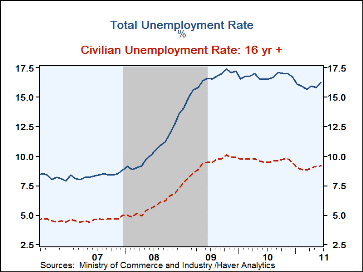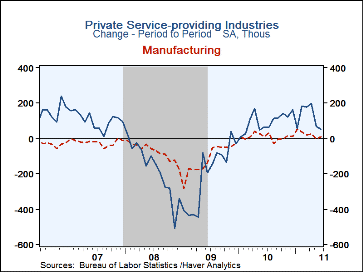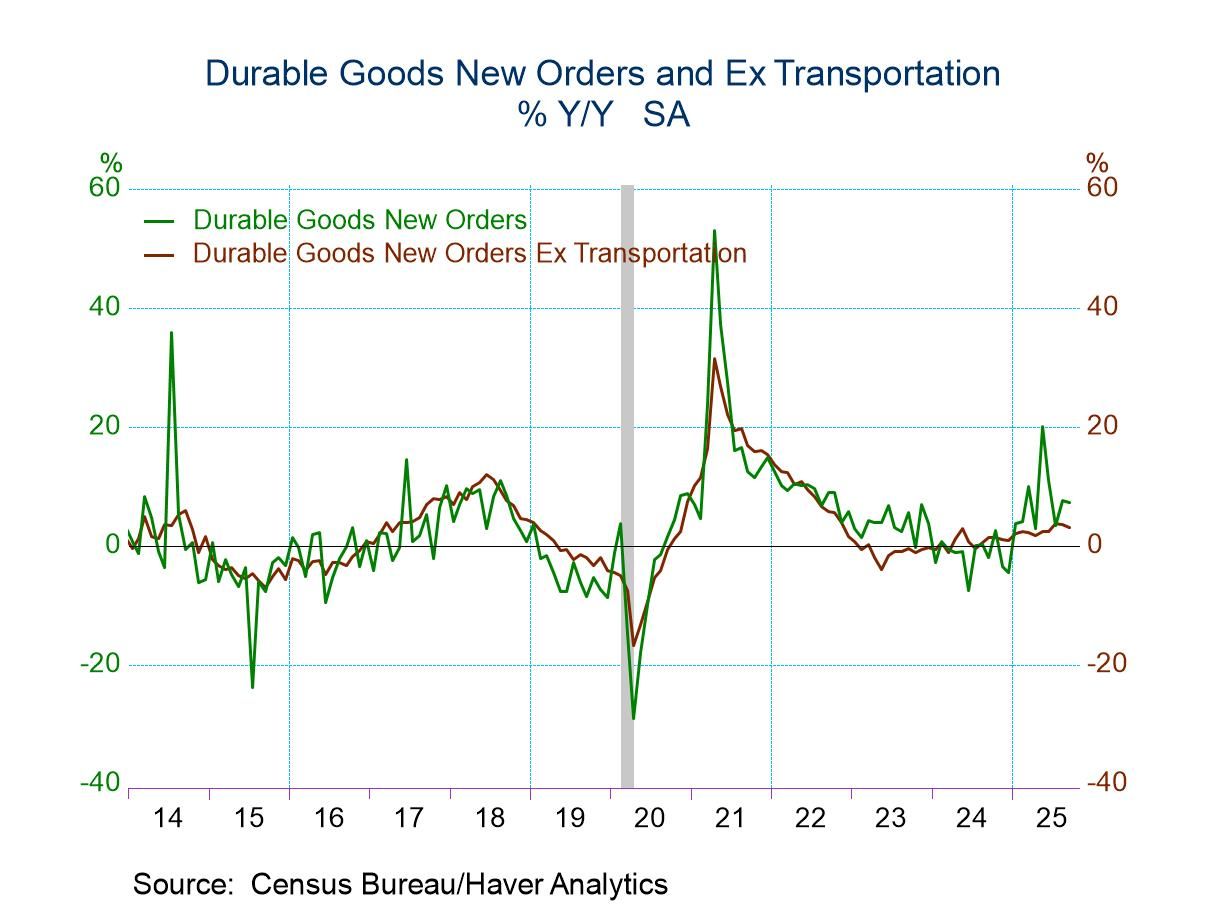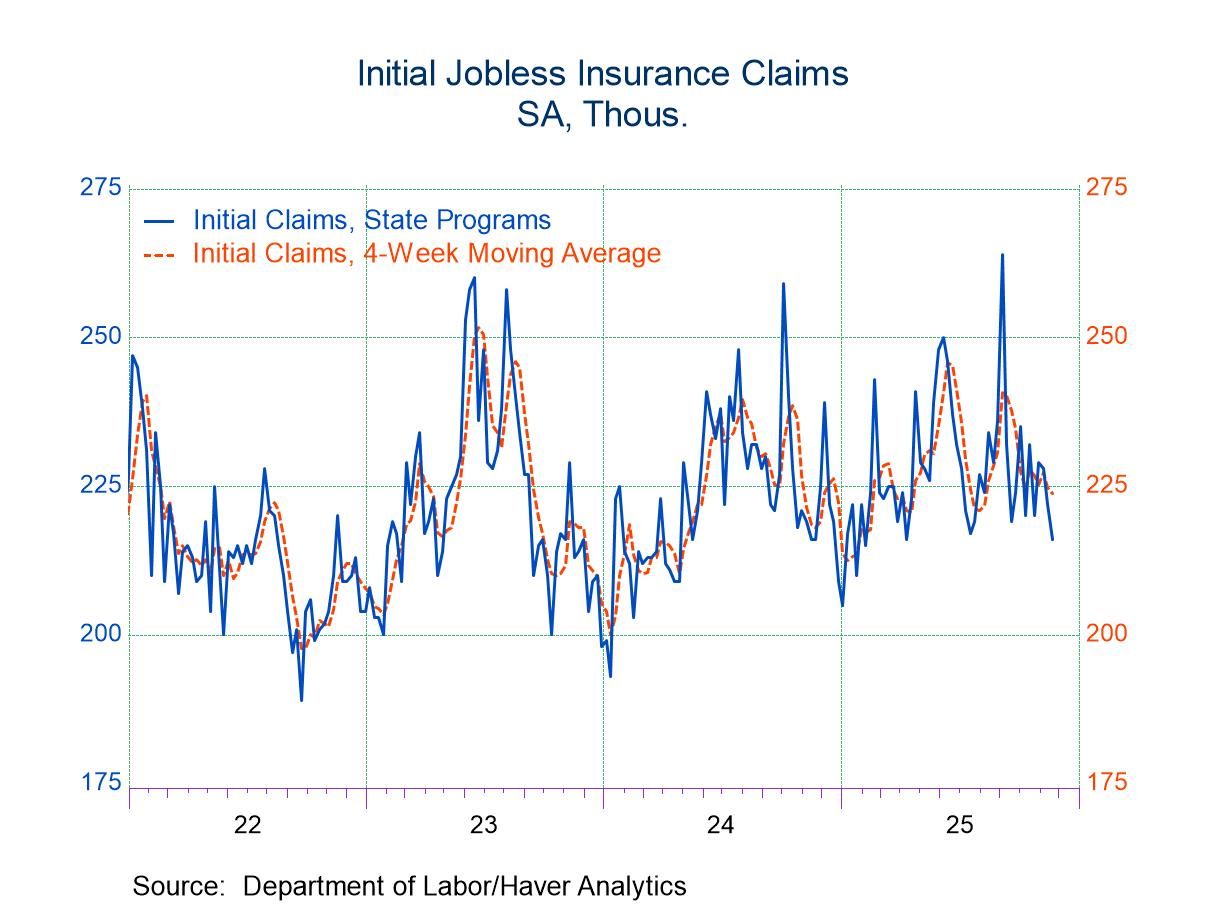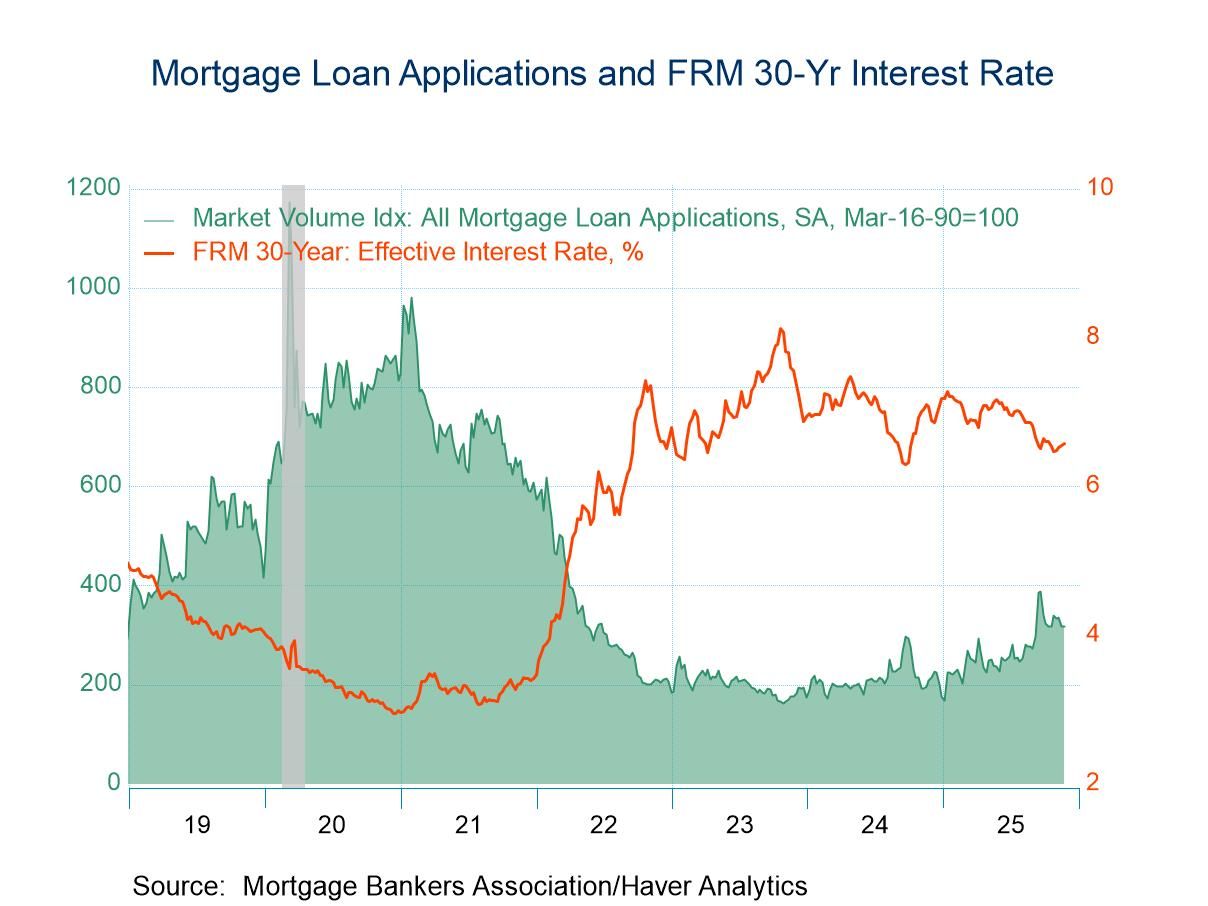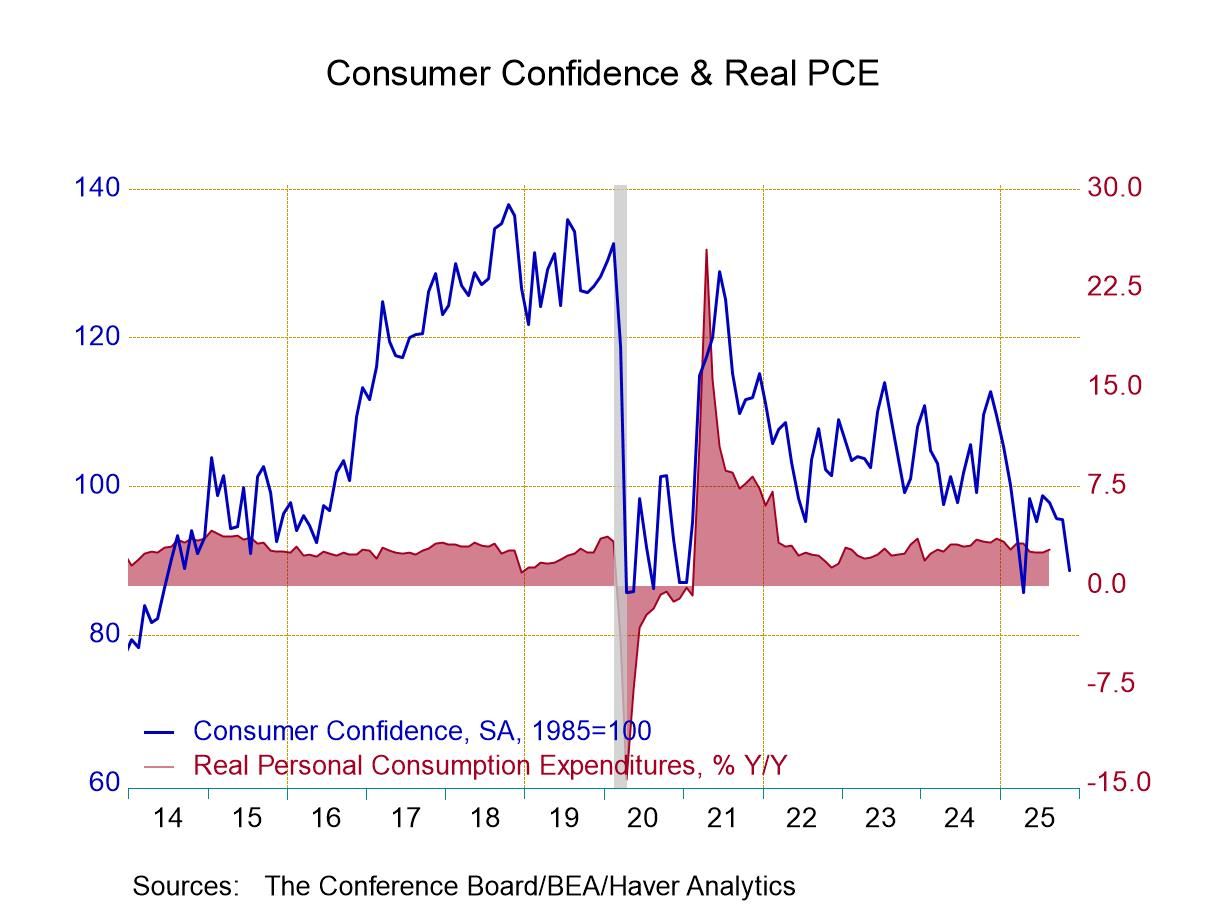 Global| Jul 08 2011
Global| Jul 08 2011U.S. Payroll Gain Disappoints; Jobless Rate Increases, Again
by:Tom Moeller
|in:Economy in Brief
Summary
The June employment painted a picture of a labor market with no forward momentum. Nonfarm payrolls rose just 18,000 following increases during the prior two months that were revised down by a collective 44,000. The latest gain [...]
The June employment painted a picture of a labor market with no forward momentum. Nonfarm payrolls rose just 18,000 following increases during the prior two months that were revised down by a collective 44,000. The latest gain compared to an expected 90,000 according to Action Economics, an increase that was widely raised after yesterday's ADP employment report. Disappointment amongst the payroll categories was widespread. In addition, the unemployment rate rose to 9.2% versus an expected 9.1%. The latest was the highest since December.
From the establishment survey of jobs, payrolls edged up just 18,000 following a 25,000 May increase and a 217,000 April gain. Services jobs were notably weak. Education services employment fell 17,400 (+1.1% y/y), the third and largest decline in the last four months. Health care & social services also rose just 17,400 (2.2% y/y), the weakest rise since January, 2010. Professional & business services jobs added 12,000 (2.95 y/y), the weakest since last September. Retail trade employment rose 5,200 (0.9% y/y), just recovering the May decline but financial activities jobs fell 15,000 (-0.2% y/y).
Construction jobs were no better and fell 9,000. The level of jobs has been roughly unchanged for twelve months. Factory sector jobs rose just 6,000 but nondurables fell 9,000 (-0.9% y/y).
Finally, budget constraints caused a 39,000 drop in government payrolls led by an 18,000 (-1.8% y/y) hit to local jobs. Federal government employment also fell 14,000 (-11.1% y/y) and state government jobs dropped 7,000 (-0.8% y/y).
The workweek fell to 34.3 hours, the shortest since March. Together with the weak jobs numbers, that left aggregate weekly hours worked down 0.3% last month. However, the Q2 average still rose 0.8%, its strongest gain of the recovery, suggesting moderate GDP growth.
These weak job numbers continue to restrain growth in wages. Average hourly earnings posted a 0.1% downtick in June, the first decline since December. That left the quarterly increase near its all-time low at 1.7%.
The numbers from the household survey looked no better than the payroll figures. The uptick in the unemployment rate was caused by a 445,000 decline (+0.2% y/y) in employment. That accompanied a 272,000 drop (-0.2% y/y) in the labor force which reversed the May rise. That drop in the labor force reflected a participation of 64.1%, the lowest since early-1984. The overall unemployment rate, including marginally attached workers and those working part-time for economic reasons, rose to 16.2%, its highest this year.
By educational attainment, the profile of unemployment rates was as follows: 14.3% for those with no high school diploma, 10.0% for high school graduates with no college, 8.4% with some college but no degree and 4.4% with a bachelors diploma. By duration, the average number of weeks unemployed fell to 38.0, and 30.3% of those were unemployed 52 weeks or longer.
The figures referenced above are available in Haver's USECON database. Additional detail can be found in the LABOR and in the EMPL databases. The expectation figures are from Action Economics and are in the AS1REPNA database.
Hidden Effort, Learning By Doing and Wage Dynamics from the Federal Reserve Bank of Richmond can be found here.
| Employment: (M/M Chg., 000s) | Jun | May | Apr | Y/Y | 2010 | 2009 | 2008 |
|---|---|---|---|---|---|---|---|
| Payroll Employment | 18 | 25 | 217 | 0.8% | -0.7% | -4.4% | -0.6% |
| Previous | -- | 54 | 232 | -- | -0.5 | -4.3 | -0.6 |
| Manufacturing | 6 | -2 | 28 | 1.4 | -2.7 | -11.6 | -3.4 |
| Construction | -9 | -4 | 4 | 0.0 | -8.1 | -16.0 | -6.1 |
| Private Service Producing | 53 | 70 | 198 | 1.6 | -0.1 | -3.5 | -0.2 |
| Government | -39 | -48 | -24 | -29 | -0.3 | 0.3 | 1.3 |
| Average Weekly Hours | 34.3 | 34.4 | 34.4 | 34.1 (Jun.'10) |
34.1 | 33.9 | 34.5 |
| Average Hourly Earnings | -0.1% | 0.3% | 0.3% | 1.9% | 2.4% | 3.0% | 3.8% |
| Unemployment Rate(%) | 9.2 | 9.1 | 9.0 | 9.5 (Jun.'10) |
9.6 | 9.3 | 5.8 |
Tom Moeller
AuthorMore in Author Profile »Prior to joining Haver Analytics in 2000, Mr. Moeller worked as the Economist at Chancellor Capital Management from 1985 to 1999. There, he developed comprehensive economic forecasts and interpreted economic data for equity and fixed income portfolio managers. Also at Chancellor, Mr. Moeller worked as an equity analyst and was responsible for researching and rating companies in the economically sensitive automobile and housing industries for investment in Chancellor’s equity portfolio. Prior to joining Chancellor, Mr. Moeller was an Economist at Citibank from 1979 to 1984. He also analyzed pricing behavior in the metals industry for the Council on Wage and Price Stability in Washington, D.C. In 1999, Mr. Moeller received the award for most accurate forecast from the Forecasters' Club of New York. From 1990 to 1992 he was President of the New York Association for Business Economists. Mr. Moeller earned an M.B.A. in Finance from Fordham University, where he graduated in 1987. He holds a Bachelor of Arts in Economics from George Washington University.



